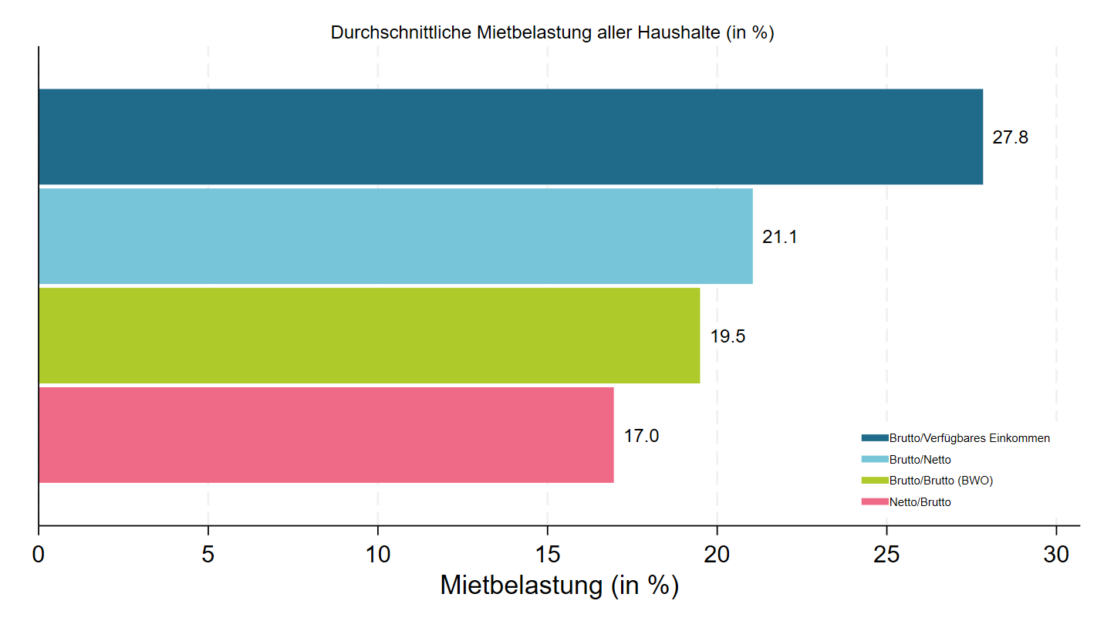Affordability of housing in Switzerland

A current study shows the stable development of the housing cost burden in Switzerland and examines the advantages that targeted subject promotion could have over the current property promotion as a housing policy instrument.
The affordability of housing is currently at the centre of political and public attention. According to the Federal Statistical Office, prices for the “Housing and energy” category of the national consumer price index rose by an annual average of 9.3 per cent between 2020 and 2023, well above the general inflation rate of 5.6 per cent. This development has intensified political calls for more affordable housing and greater support for tenant households.
Stable trend in affordability
The analysis of the affordability of housing costs – i.e. the ratio of housing costs to gross income – shows a stable trend over the last 20 years. Despite rising rents and property prices in real terms, the average burden ratio for Switzerland as a whole has remained constant at around 20 per cent of gross income, well below the limit of 30 per cent that is considered affordable. However, a breakdown of the burden ratio according to various household characteristics indicates a certain deterioration in affordability for mobile households – i.e. households that have recently moved into a flat. Single-person households and households in densely populated regions, which often have a high level of housing consumption, are subject to an above-average burden.
Costs of subsidised housing already exceed those of subsidised housing
Subsidised housing is used more frequently than subsidised housing at all levels of government. The estimated direct costs of object support currently amount to around CHF 88 million. In addition, there are indirect costs such as lost interest, rental and building lease income, which are estimated at CHF 560 to 830 million per year. Subject assistance, which mainly takes the form of social welfare and supplementary benefits, already costs CHF 1.7 billion a year. Despite higher overall costs, subject assistance does not prove to be significantly more expensive per supported household compared to object assistance.
Advantages of subject assistance as a housing policy instrument
Comprehensive subject assistance could improve the accuracy of Swiss housing policy. The study shows that the “supplementary benefits” model would require state support of around CHF 1.45 billion, with 12.6 per cent of Swiss households being eligible. A model like the one in Basel-Stadt, which only supports households with children, would cost just under CHF 700 million and cover 3.6 per cent of households. These costs would be only slightly higher than those of the current property subsidy.
Cost-benefit ratio crucial
The study suggests that the introduction of nationwide subject aid could substantially improve the targeting of housing policy. Although subject aid may be more expensive, it has a better cost-benefit ratio. The possibility of tailoring subsidies to target groups, situations and needs makes subject aid an efficient and effective housing policy instrument. The financial outlay depends heavily on the practical organisation of the system, and fears of possible price pressure on the housing market are only justified under certain conditions.